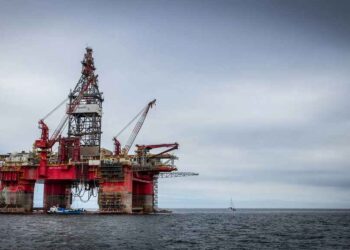The Elba liquefaction project primarily involves the addition of liquefaction facilities to Southern LNG Company’s (SLNG) existing Elba Island LNG Terminal, located at Elba Island in the Savannah River, Chatham County, Georgia.
It is expected that the project will receive approval from the Federal Energy Regulatory Commission (FERC) in the second quarter of 2015.
The proposed project will be jointly implemented with the EEC Modification Project, which involves the installation of two compression stations along Elba Express Company’s (EEC) existing Elba Express Pipeline to supply natural gas to the terminal.
Elba Liquefaction Company (ELC), a joint venture of SLNG and Shell US Gas & Power is implementing the project.
SLNG is a unit of Kinder Morgan and El Paso Pipeline Partners (EPB), while Shell US Gas & Power is a subsidiary of Royal Dutch Shell. EEC, the owner of the 200km Elba Express Pipeline, is also a unit of Kinder Morgan.
The total investment for the project is estimated to reach $1bn to $1.5bn.
The terminal has received the US Department of Energy’s (DOE) approval to export up to four million tonnes per annum (mtpa) or 500 million ft3a day (Mmcfd) of LNG to Free Trade Agreement (FTA) countries.
Meanwhile, the DOE’s approval to export up to four mtpa (500Mmcfd) of LNG to non-FTA countries has not yet been granted.
Elba liquefaction project and EEC modification project details
Cameron Liquefaction Project, Hackberry, Louisiana, United States of America
The Cameron Liquefaction Project involves the construction and addition of natural gas liquefaction and export facilities to the existing LNG regasification facility at Cameron LNG.
The liquefaction capacity earmarked for the project is approximately 2.5 million tonnes per year (mtpa) of LNG or 350Mmcfd.
The project will be carried out in two phases. Phase I will involve the installation of six liquefaction units with a combined output capacity of 210Mmcfd and the implementation of the EEC modification project, while Phase II will add two to four additional liquefaction units with a combined output capacity of 140Mmcfd.
Installation of a flare system while also take place through the project, as will modifications to the terminal piping, modification and construction of a number of buildings, truck transport of natural gas liquids, and modifications to electrical distribution facilities.
“The total investment for the project is estimated to reach $1bn to $1.5bn. “
The EEC modification project will also be carried out in two phases. Phase I will involve the installation of a new 16,000hp compressor at Hartwell Compressor Station in Hart County, Georgia, while Phase II will involve the installation of a 11,000hp compressor station, and 1,000ft of interconnecting pipeline in Jefferson County, Georgia. The preliminary engineering design for the project was completed in January 2014.
Phase I of the liquefaction project is expected to be commissioned in late 2016 or early 2017, while phase II is expected to come online in late 2017 or early 2018.
Treated gas from the liquefaction units will be stored in the existing storage tanks and then loaded onto LNG vessels berthed at the existing marine facility for export.
Liquefaction technology for the Elba project
The project will implement Shell’s small-scale movable modular liquefaction system (MMLS). Each MMLS, featuring two parallel refrigeration trains, provides reliability. The technology also allows for fabrication of equipments from manufacturing sites and easy installation at the project site.
Key players involved
The front end engineering design (FEED) study for the project is being performed by CB&I. CH-IV International assisted CB&I to file the Resource Reports.
The biological field surveys for the project, including a wetland delineation report, were performed by CH2M Hill Engineers, while cultural resource field surveys were conducted by R Christopher Goodwin & Associates.

















































